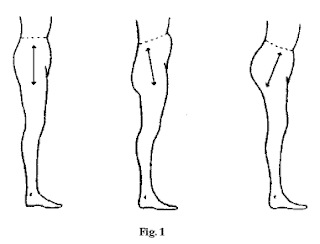What Is Posterior Pelvic Tilt?
 Photo by bupowski
Photo by bupowskiLike anterior pelvic tilt, posterior pelvic tilt is a postural is a postural deficiency, although a less common one. Unlike in anterior pelvic tilt, however, in posterior pelvic tilt the top of the pelvis is tipped backward instead of forward.
The image below shows a neutral pelvic position (left), a pelvis with posterior pelvic tilt (middle) and a pelvis with anterior pelvic tilt (right):

As can be seen from the pictures, it is the position of the top of the pelvis, not the bottom, that determines whether the tilt is anterior (i.e. forwards) or posterior (i.e. backwards). Whereas anterior pelvic tilt involves an exaggeration of the natural lumbar curvature (the S-shape of the spine), posterior pelvic tilt is a reduction in the natural lumbar curvature.
The muscles involved in posterior pelvic tilt are hip extensors, hip flexors and abdominal muscles. Contrary to anterior pelvic tilt, the hip extensors are shortened and the hip flexors are laxed. The abdominal muscles are tightened.